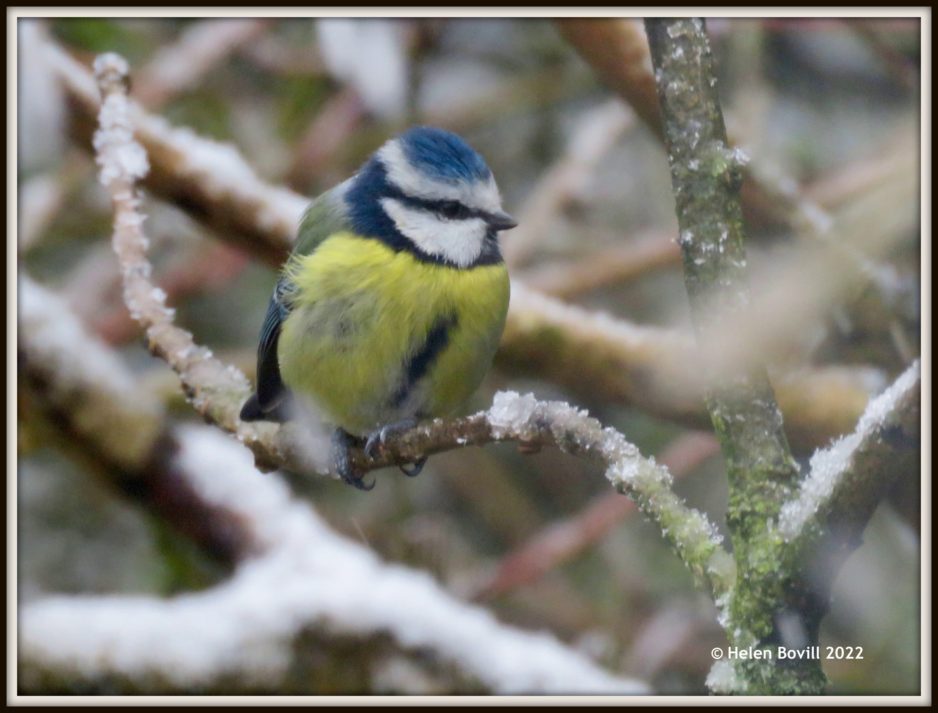Cemetery Wildlife February 2022
This is my 12th report for the newsletter. My first one was in March 2021 and I have therefore spent this last 12-month period observing the flora and fauna of the cemetery in much greater detail than ever before. The time has simply flown by!
February started with plenty of very cold but sunny days. Then from mid-month onwards three named storms – Dudley, Eunice and Franklin – hit the UK. Hull was not as severely affected as other parts of the country and the cemetery suffered no major damage. A large branch came off a tree near the western boundary but no headstones were damaged.
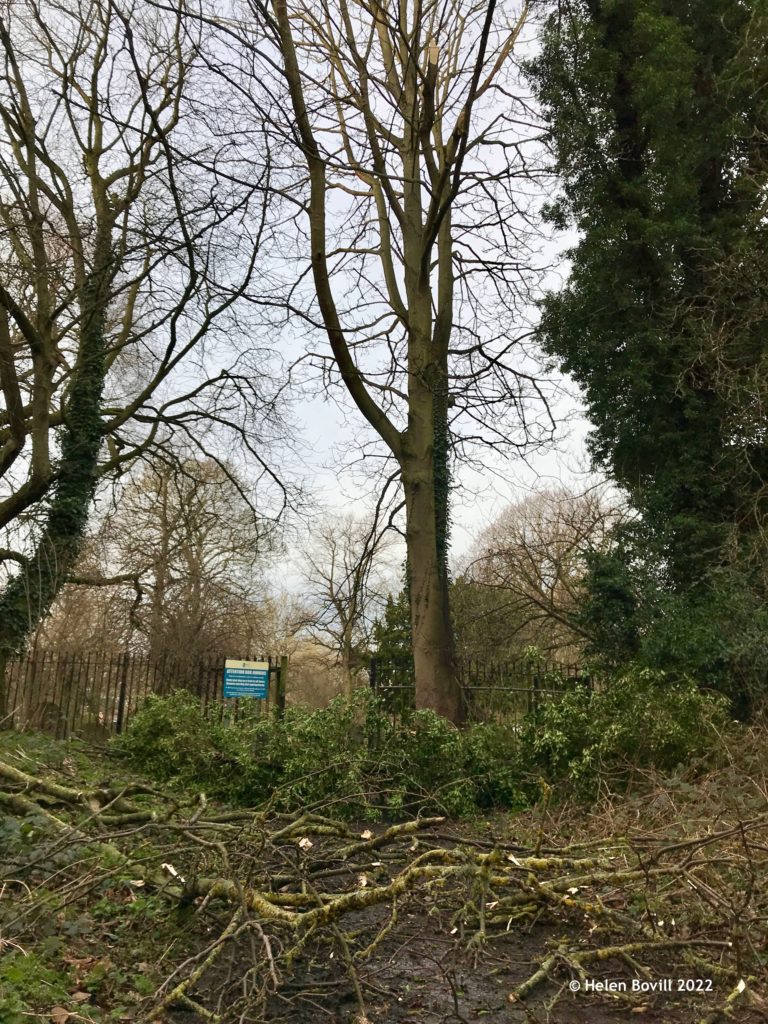
Unfortunately, the heavy rainfall has left some of the footpaths in a very muddy condition. There was even a brief snowfall but it only gave a thin covering that soon melted away. The rain, sleet and snow didn’t seem to adversely affect the cemetery wildlife though, and the birds were around as usual.
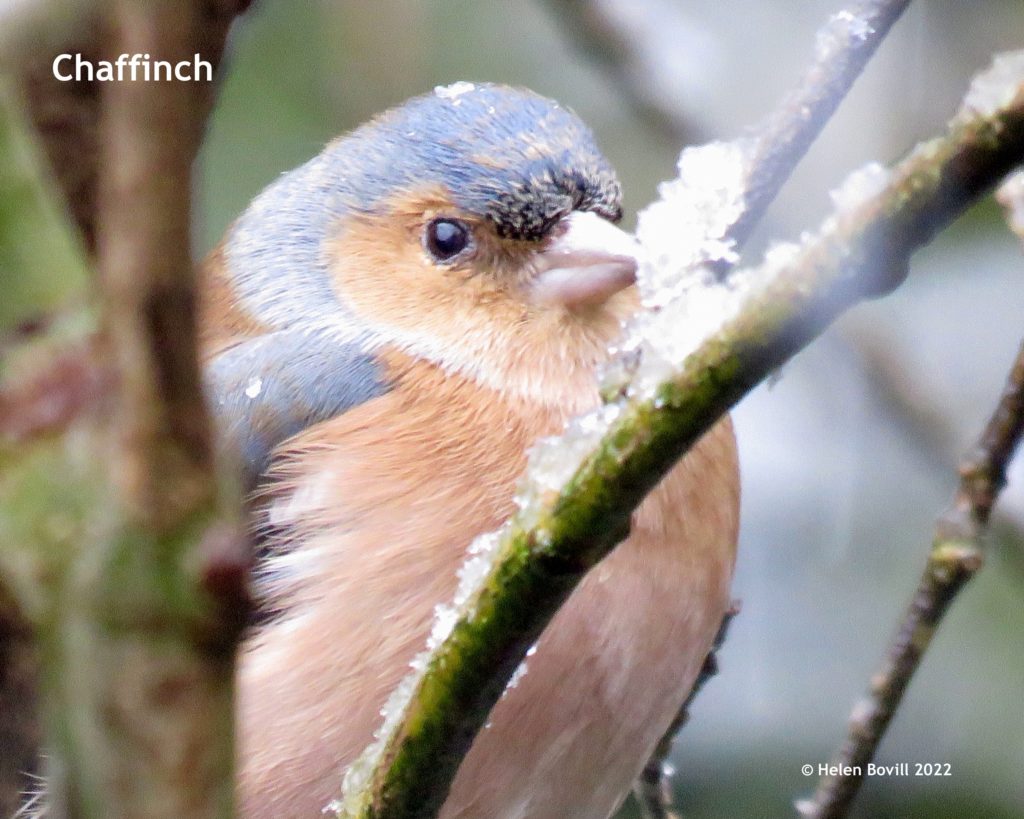
Birds
The birds have started to sing and were in fine voice all around the cemetery. The singing serves to mark out their territories and attract mates. You can often hear them before you see them! This Song Thrush was particularly loud and apart from its song, it can also be distinguished from the larger Mistle Thrush by the markings on its chest. The Song Thrush has regular shaped markings akin to an arrowhead or a heart, whereas the markings on the Mistle Thrush are more irregular.
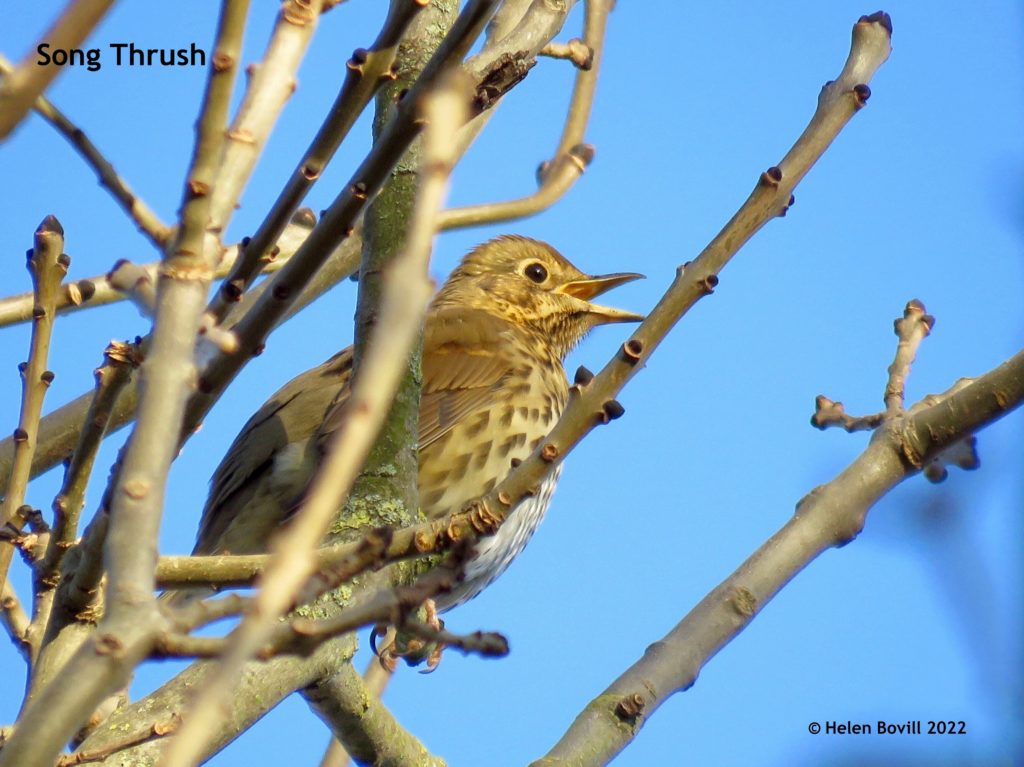
Robins and Wrens also have fine singing voices and I saw and heard several of them in the cemetery this month. The Dunnock also has a fine and melodious song.
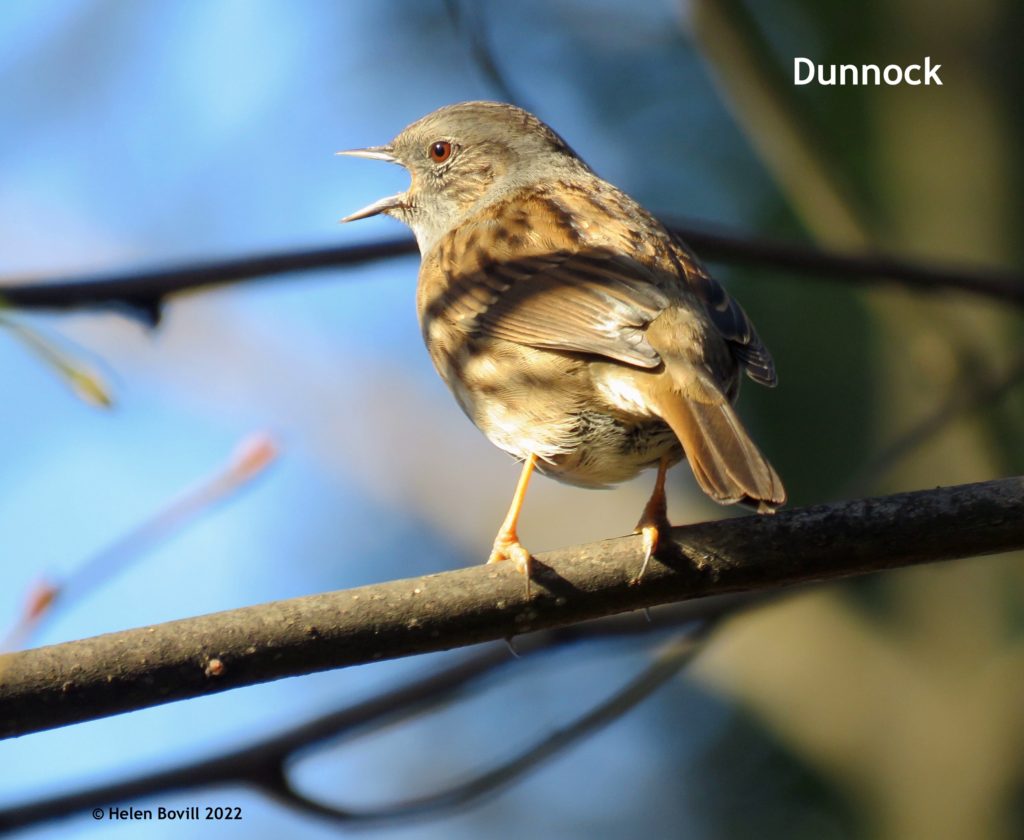
The nesting process seems to have started already, as I saw a pair of Long-tailed Tits flying in and out of a dense patch of Brambles – and ideal nesting site for this species. I also observed this Great Tit gathering moss – an ideal nesting material which is in abundance throughout the cemetery.
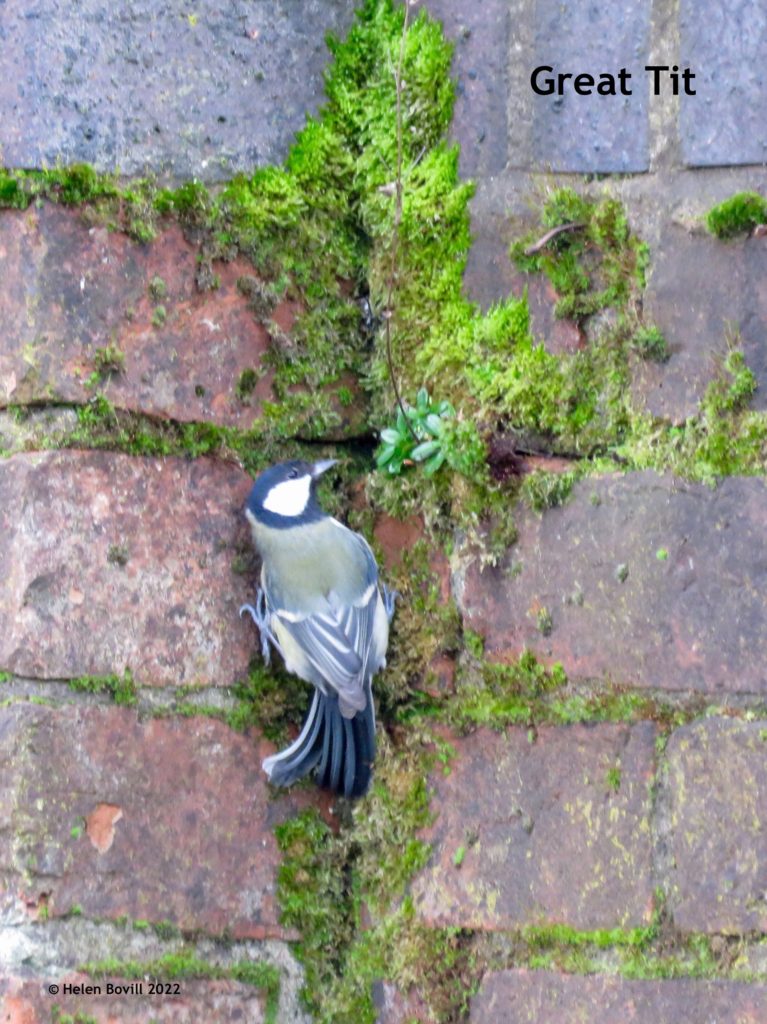
Also seen this month – Coal Tits, Wood Pigeons, Stock Doves, Carrion Crows, Magpies, Blackbirds and Goldfinches. And you can also hear, and then see, Greylag and Canada Geese flying overhead, most likely on their way to Pearson Park.
In October last year the volunteers carried out a check of the nest boxes and found an occupancy rate of 63.41%. Since then, a few more have been located and checked. Only one further box was found to have been used, giving an occupancy rate of 61.36%. One box was found to be damaged and was replaced earlier this month.
Plants
The bulbs planted by the volunteers in the Quaker Burial Ground in Autumn have now started to flower, creating some nice splashes of colour in there. The Crocus plants even attracted a visiting Hoverfly!
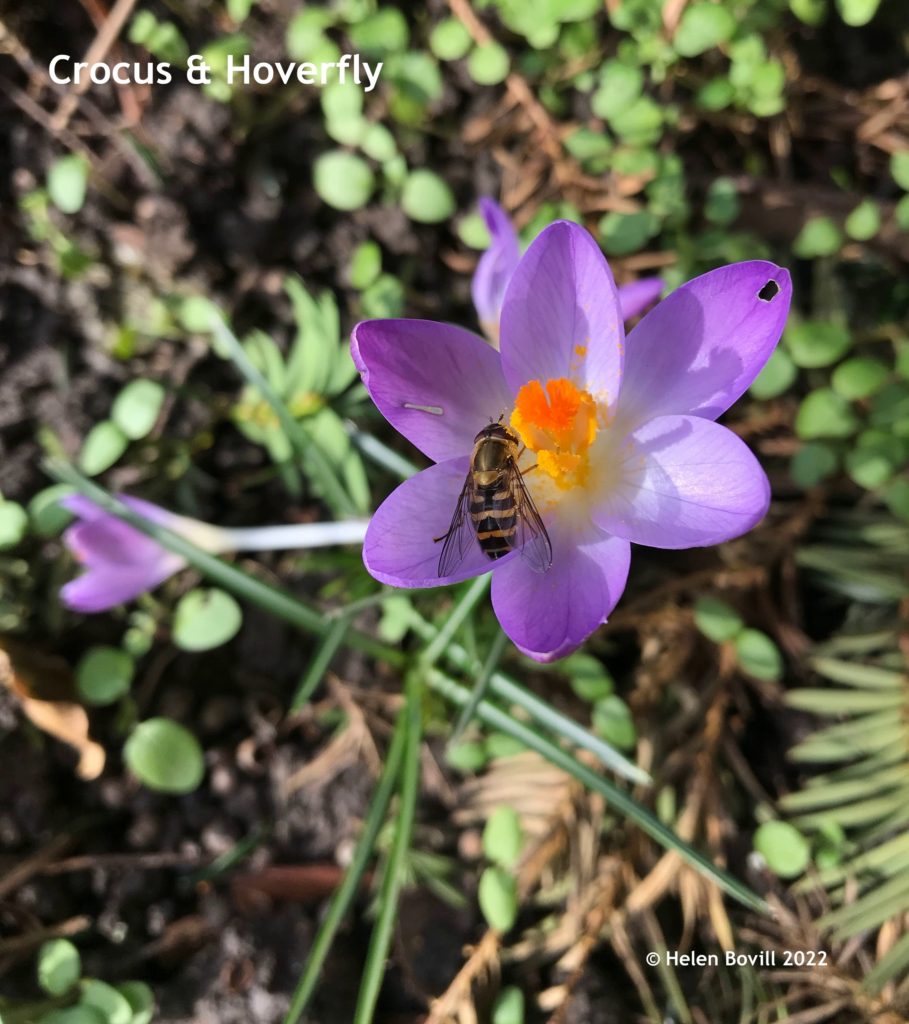
The miniature Tete-a-Tete Daffodils are starting to create a nice border around the feature stones.

The main focus of my reports will always be the cemetery wildlife. But I’ll also include the plants that the volunteers have set because these have such a beneficial effect on both residents and visitors alike.
It is now peak Snowdrop time and there are lots of them all over the cemetery – some single varieties, some double. There are around 20 different species native to Europe and the Middle East, although they might not actually be native to the UK. But they have been recorded as growing wild here since the late 18th century.
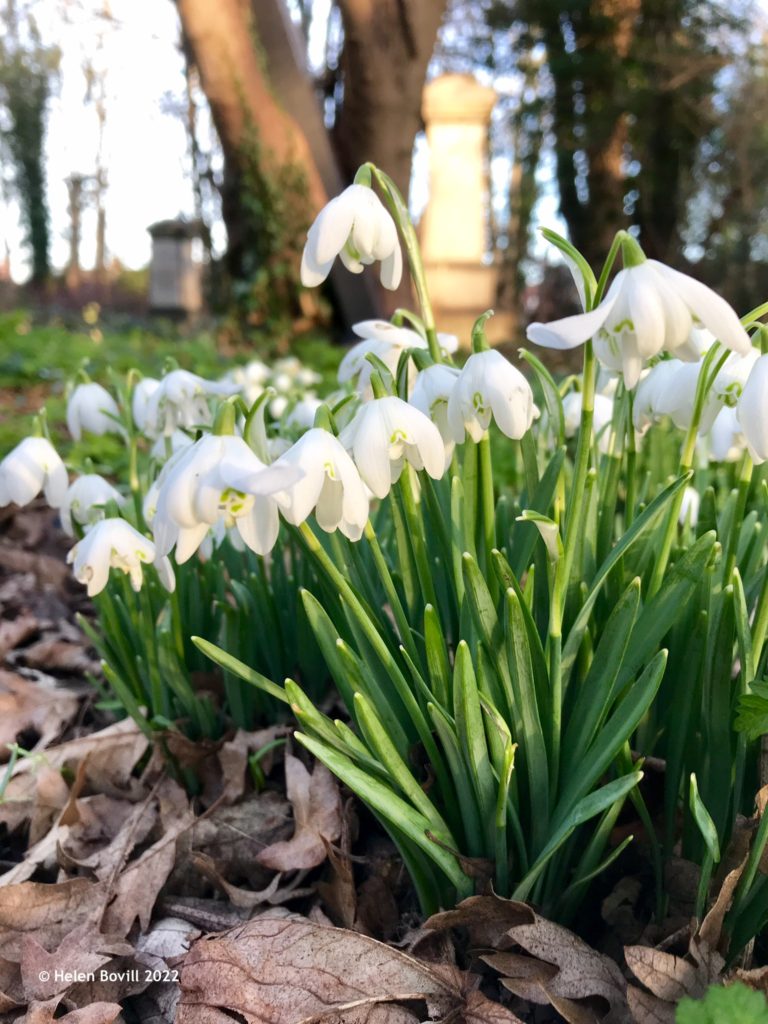
Tiny green shoots are now visible on some of the trees and shrubs. Flowers have just started to open on the Forsythia near the cemetery gates but I’ll talk about that next month. The Blackthorn is now in flower – the flowers appear on the plant before the leaves do.
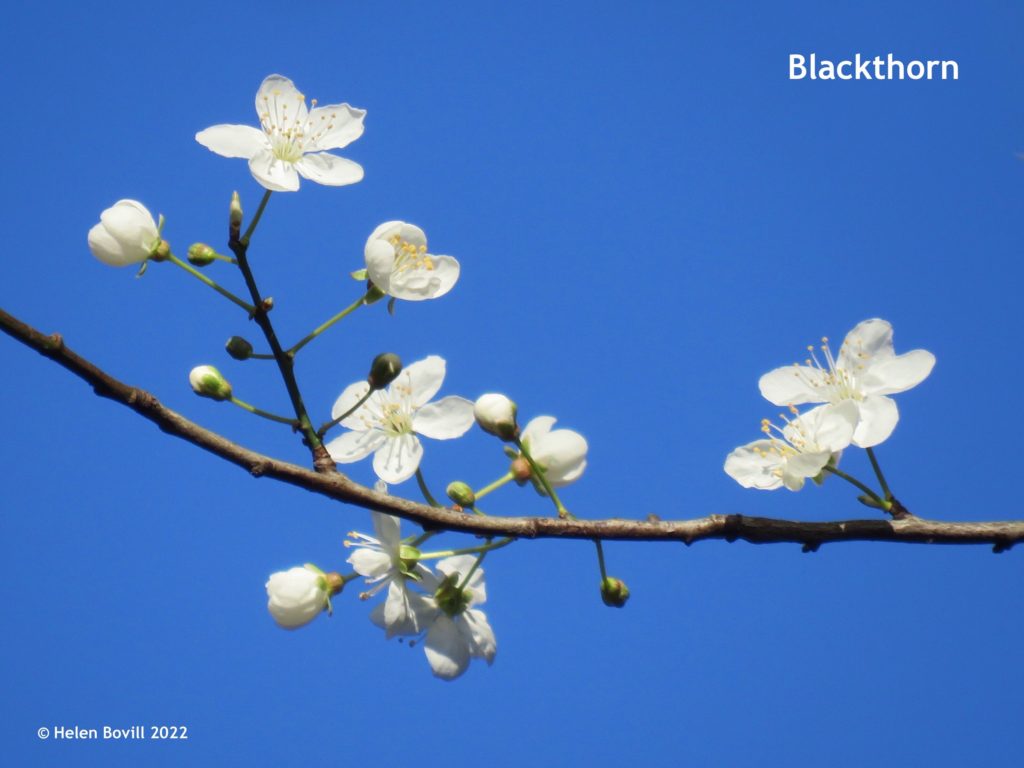
The Lesser Celandines I mentioned last month have not increased in significant numbers like I expected. Looking back on this time last year the grass verge along Spring Bank West was covered in them. There were even some Butterflies around during the last few days of that February. The wet weather and lack of sunshine in the middle of the month has obviously affected their flowering.
Mushrooms
Even in the middle of Winter there are still some mushrooms to be found, including this Jelly Ear on a fallen branch. I was lucky to find them when I did. A few days later they had started to shrivel and the plants around it had started to grow over what remained of them.
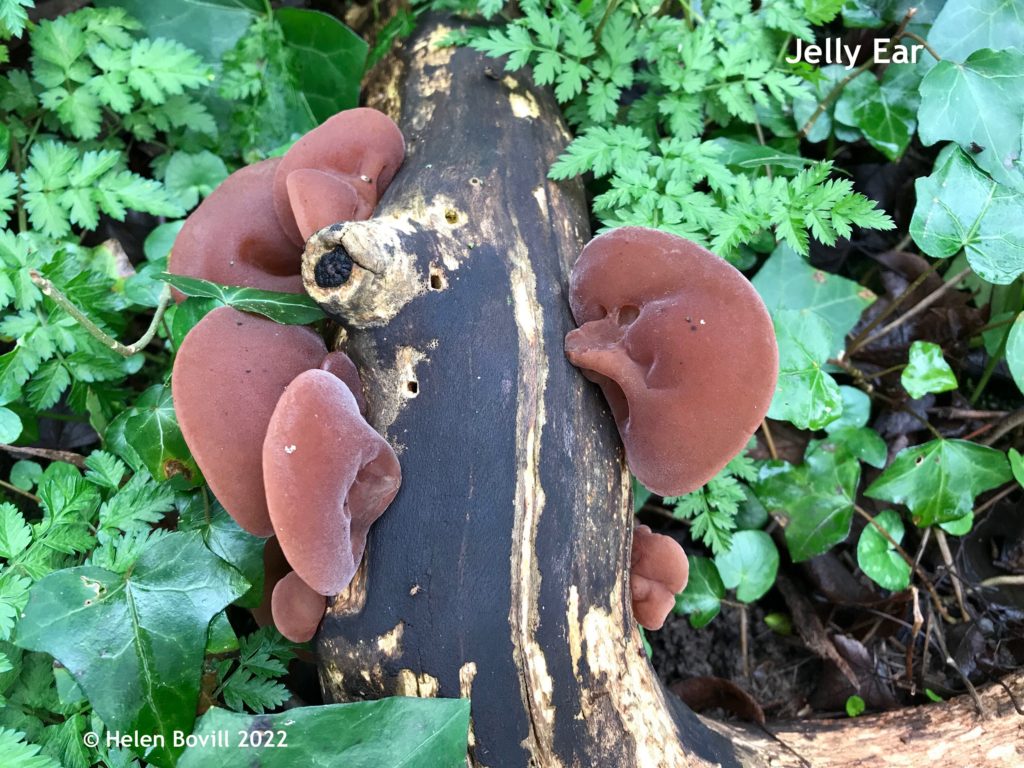
Conclusion
Weather-wise February has been a month of contrasts. Some of the plants are a little behind in their development compared to last year. But the month ended with some fine sunny days. I now have a whole year’s-worth of data, mainly in photographic form, for comparison. It will be interesting to see how March this year compares to March last year. Wonderful Wildlife


